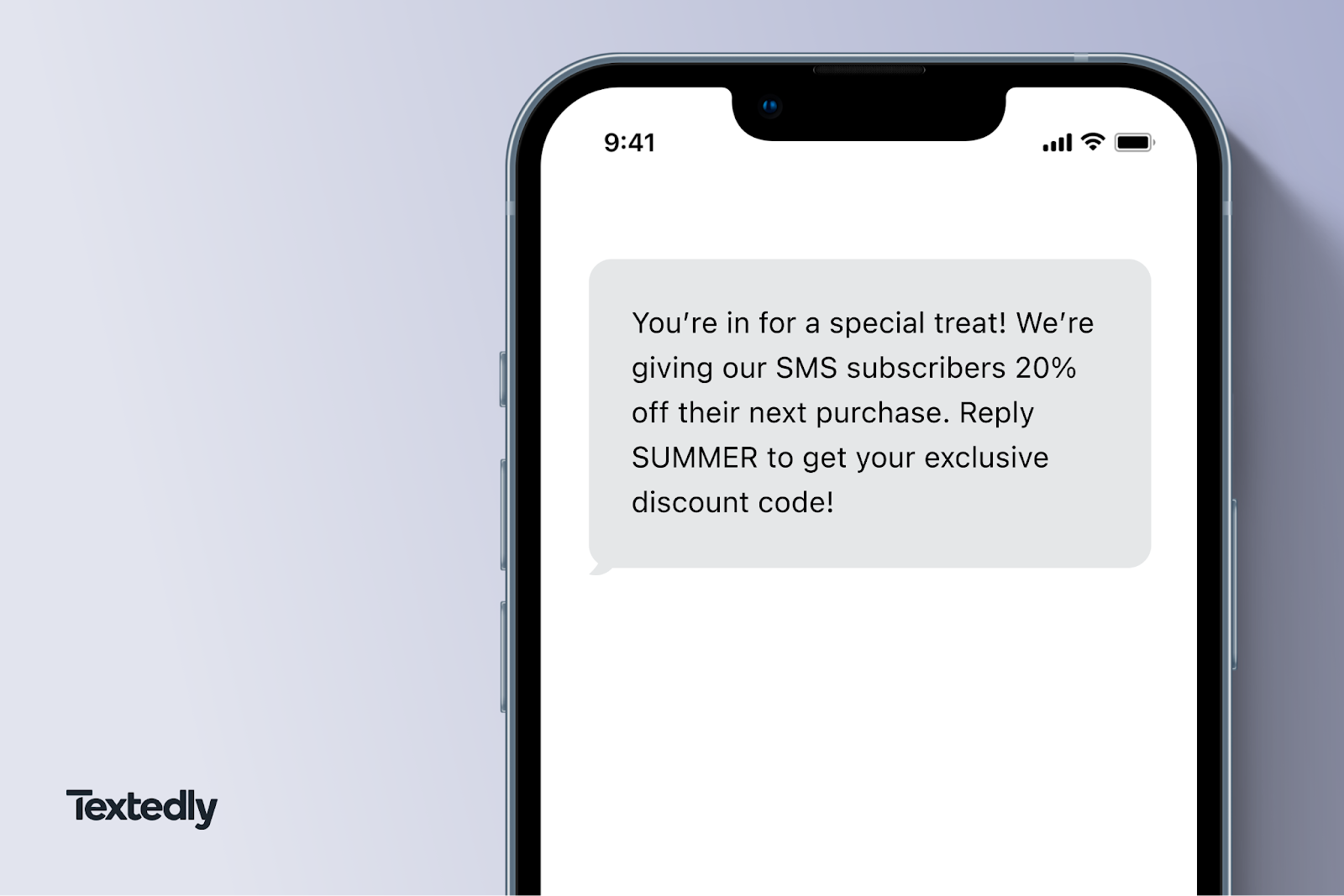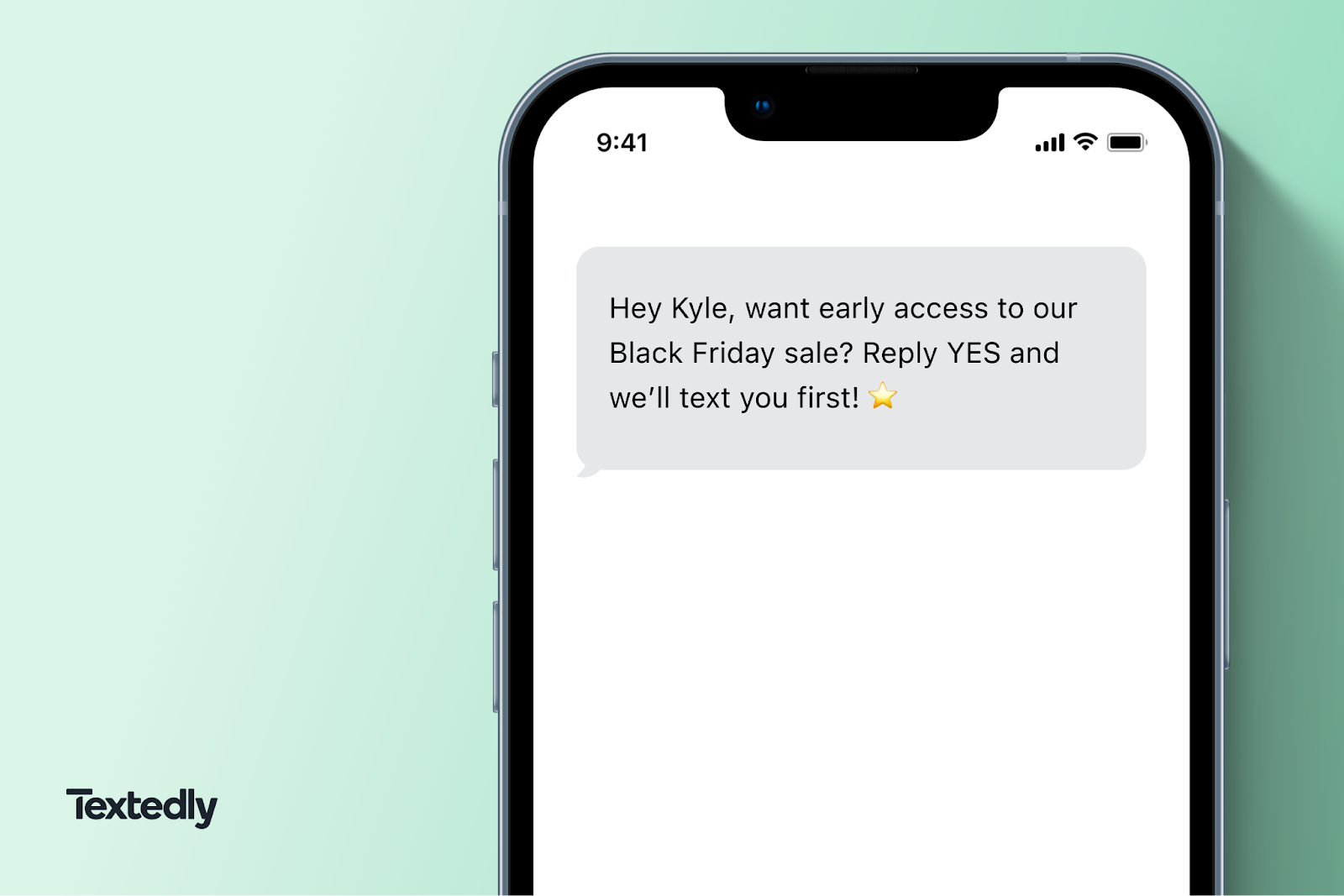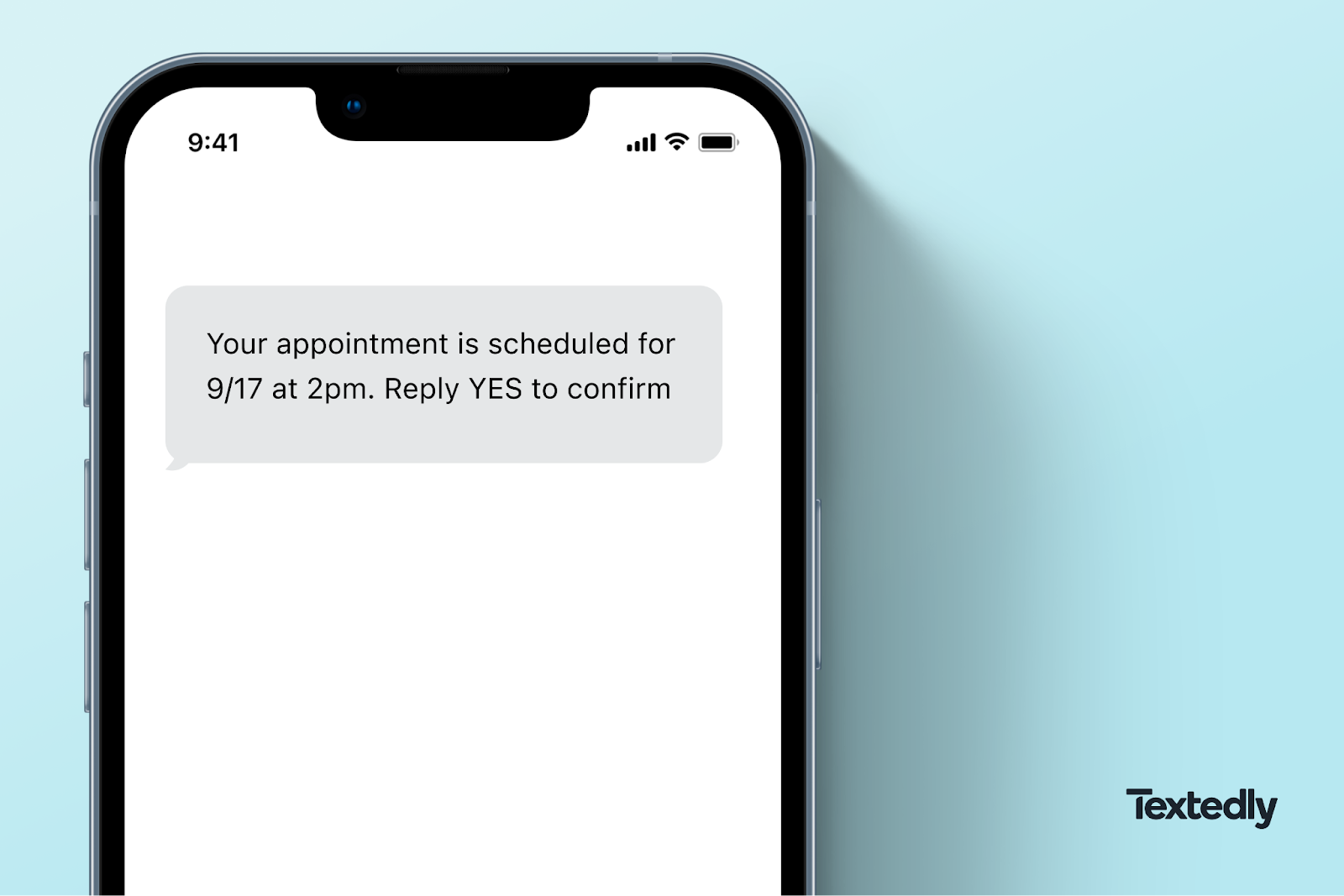When you text a friend or family member, you usually expect a reply. But for businesses using SMS marketing, that same kind of engagement isn’t always guaranteed. Businesses must regularly track and optimize their SMS strategy to engage subscribers and boost response rates.
So, what exactly are SMS response rates? How do you calculate them, and how do they stack up in the SMS vs. email response rate comparison? This guide explains SMS response rates, teaches you how to measure them, and shares proven strategies for increasing responses to your business text messages.
Jump right to:
- Understanding SMS Response Rate
- How to Calculate SMS Response Rate
- What’s the Industry Average SMS Response Rate?
- Factors Influencing SMS Response Rate
- 7 Ways to Improve SMS Response Rate
<h2 id="Understand">Understanding SMS Response Rate</h2>
Your business’ SMS response rate isn’t just a tally of how often customers text you back. More precisely, it’s the percentage of recipients who respond to your offer compared to the total number of messages sent.
Tracking your brand’s response rate, along with other key SMS KPIs, is critical to the success of your SMS marketing campaigns as it offers key insight into consumer behavior.
For example, a high response rate to a modest discount could signal that many customers are already interested in your brand. On the flip side, a weak response to a generous offer might suggest they still need more trust or value before converting.
Response rates are also key to track because they’re one of the few easily calculable figures you can measure for SMS campaigns. Take other key performance indicators (KPIs), for example:
- Total revenue
- Return on investment (ROI)
- Increased number of clients
While these are important metrics to keep tabs on, they’re not as cut-and-dry as your response rate. Revenue, for example, can increase for myriad reasons, and it can be difficult to determine a singular campaign’s effect on the total.
On the other hand, SMS response rate only has two variables to keep track of, and both are easily defined, measured, and accessed.
<h2 id="How">How to Calculate SMS Response Rate</h2>
You can calculate your SMS response rate using a simple formula. Take the number of total responses and divide it by the total number of messages sent. To get a percentage, multiply the number by 100.

For example, let’s say your business sent 1,000 messages and received 150 replies. Your SMS response rate would be 15%. This formula gives businesses a clear benchmark to track and improve campaign performance over time.
<h2 id="Average">What’s the Industry Average SMS Response Rate?</h2>
According to recent industry benchmarks, the average SMS response rate is around 45%. That’s significantly higher than most other marketing channels, demonstrating just how effective SMS can be at engaging customers. However, what qualifies as a “good” response rate can vary widely, depending on a business’ goals, audience, and message content.
For example, response rates for SMS appointment reminders can be as high as 70%, while win-back or re-engagement campaigns may average a 15% response rate.
How SMS response rates compare to other channels
When it comes to driving fast, actionable responses, SMS outperforms most other communication methods.

- SMS offers the highest response rate — 45% — and an average response time of 90 seconds.
- Email has a significantly lower response rate — around 6% — and an average response time of 90 minutes.
- LinkedIn InMail messages have an average response rate of between 18-25%.
- Direct mail maintains a response rate of 4.4%, but responses can take an average of several days to weeks to arrive.
<h2 id="Factors">Factors Influencing SMS Response Rate</h2>
Several elements can impact how many recipients engage with your text messages. Let’s cover a few best practices to ensure you’re optimizing your SMS strategy to boost response rates.
- Message Content. With roughly 23 billion texts sent per day, yours needs to be relevant and engaging to stand out. Strong SMS content delivers value right away — whether that’s a compelling offer, a helpful reminder, or a clear call-to-action.
- Contact List Cleanliness. Sending messages to outdated or disengaged numbers can drag down your performance. Regularly remove inactive, invalid, or unresponsive contacts to ensure you’re only texting people who want to hear from you.
- Timing. While the nocturnal amongst us may appreciate a sweet 3 a.m. coupon code, the vast majority of society will miss a text sent outside their waking hours.
- Frequency. Bombarding your customers’ phones with daily (or hourly) messages is much more likely to annoy them than compel them to explore your brand.
- Audience Targeting. The more closely the offers you send out match the needs and desires of their recipients, the more likely they are to be redeemed. Understanding your audience and catering campaigns to their sensibilities is key to bolstering SMS response rates.
Even small tweaks in these areas can lead to noticeable improvements in your overall SMS campaign response rate.
<h2 id="Seven">7 Ways to Improve SMS Response Rate</h2>
So, how do you actually go about improving response rates? These seven proven strategies will help you craft more effective messages, send them at the perfect time, and boost engagement across your SMS campaigns.
1. Amp Up Content Quality
The content of your message is your first impression. Messages that are vague, boring, or overly promotional tend to get ignored. Focus your efforts on providing value by sharing exclusive offers, relevant updates, or time-sensitive information that your audience can act on. Try posing a direct question or creating a sense of urgency to encourage quicker responses.

2. Personalize Messages
Generic texts don’t inspire action. Personalized SMS messages feel more relevant and trustworthy. Use the recipient’s name, location, or purchase history to create compelling and relevant offers.
Textedly users can leverage dynamic fields and Tags to insert customer-specific data automatically, increasing the likelihood of a response with just a few clicks.
3. Encourage Responses
If you want recipients to respond, be clear about what action they should take next. Always include a simple call-to-action (CTA), such as “reply YES to confirm,” or “Save your spot by replying BOOK.” Remove ambiguity and guide your audience toward the desired action.

4. Optimize Send Times
Timing can make or break your SMS campaign. Messages sent at inconvenient hours are more likely to be ignored or even result in unsubscribes. Rather than guessing, review your past campaign analytics to identify trends in response times. Were there messages sent in the morning or afternoon that had a higher response rate?
Many brands find that late morning and early evening on weekdays yield the best response rates, but it’s always best to A/B test timing based on your specific audience.
5. Manage and Segment Lists
Sending the right message to the right audience is key. Use list segmentation to group your contacts by behavior, location, purchase history, or engagement level. For example, you might send a VIP promotion to your most active customers and a re-engagement offer to lapsed subscribers.
Creating a well-targeted message will result in a more personal, relevant experience for contacts, boosting the chances of a reply.
6. Use A/B Texting
Every audience is different — what works for one campaign might not be as successful for another. A/B texting allows your marketing team to experiment with different message copy, CTAs, send times, or even engagement tactics (like emojis or images) to see what drives the highest response rate.
7. Keep Messages Short and Clear
Less is more when it comes to SMS. Texts should be brief, easy to read, and free of jargon or unnecessary details. Your messages should ideally aim to stay under 160 characters — the standard SMS length — to ensure your message isn’t split into multiple texts.
Aim to make your messages easy to understand and act on. If subscribers have to read your message twice, they’re less likely to respond.

Drive Subscriber Action With Textedly
Winning SMS campaigns don’t just send messages; they spark action. Textedly provides the intuitive SMS tools you need to monitor response rates and analyze key metrics, test what works, and create personalized texts that customers can’t help but engage with.
Ready to cut out the guesswork and drive real results? Try Textedly free.






